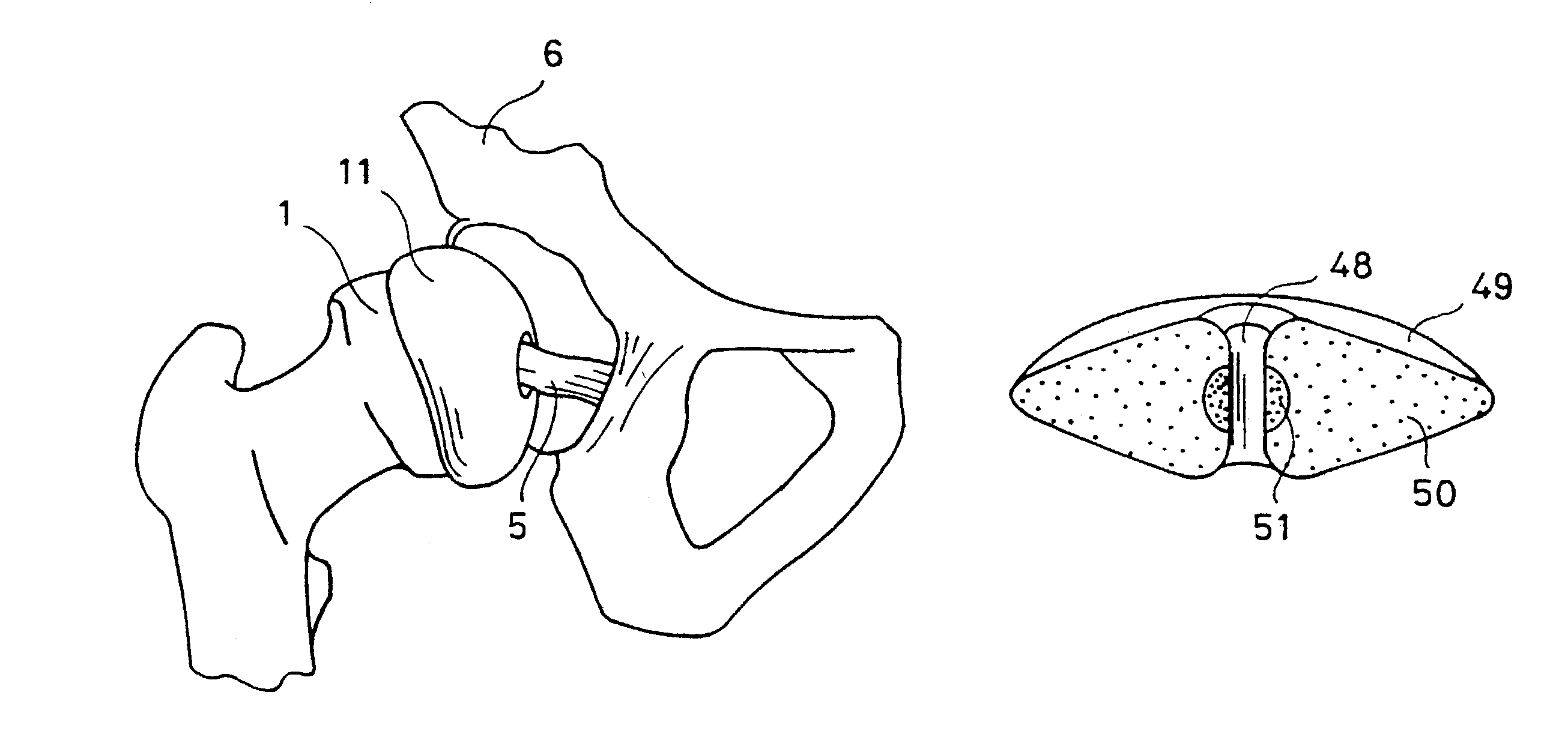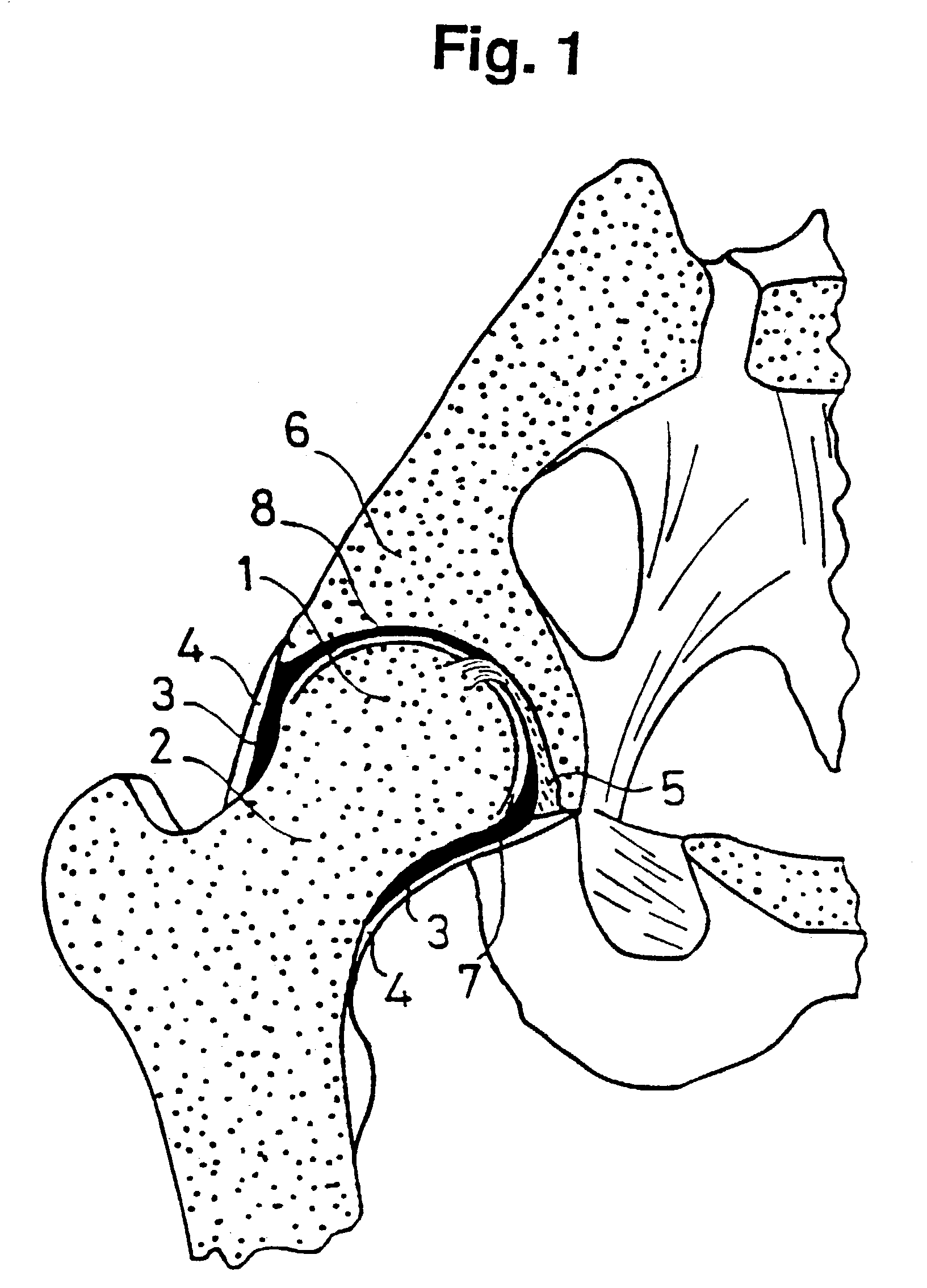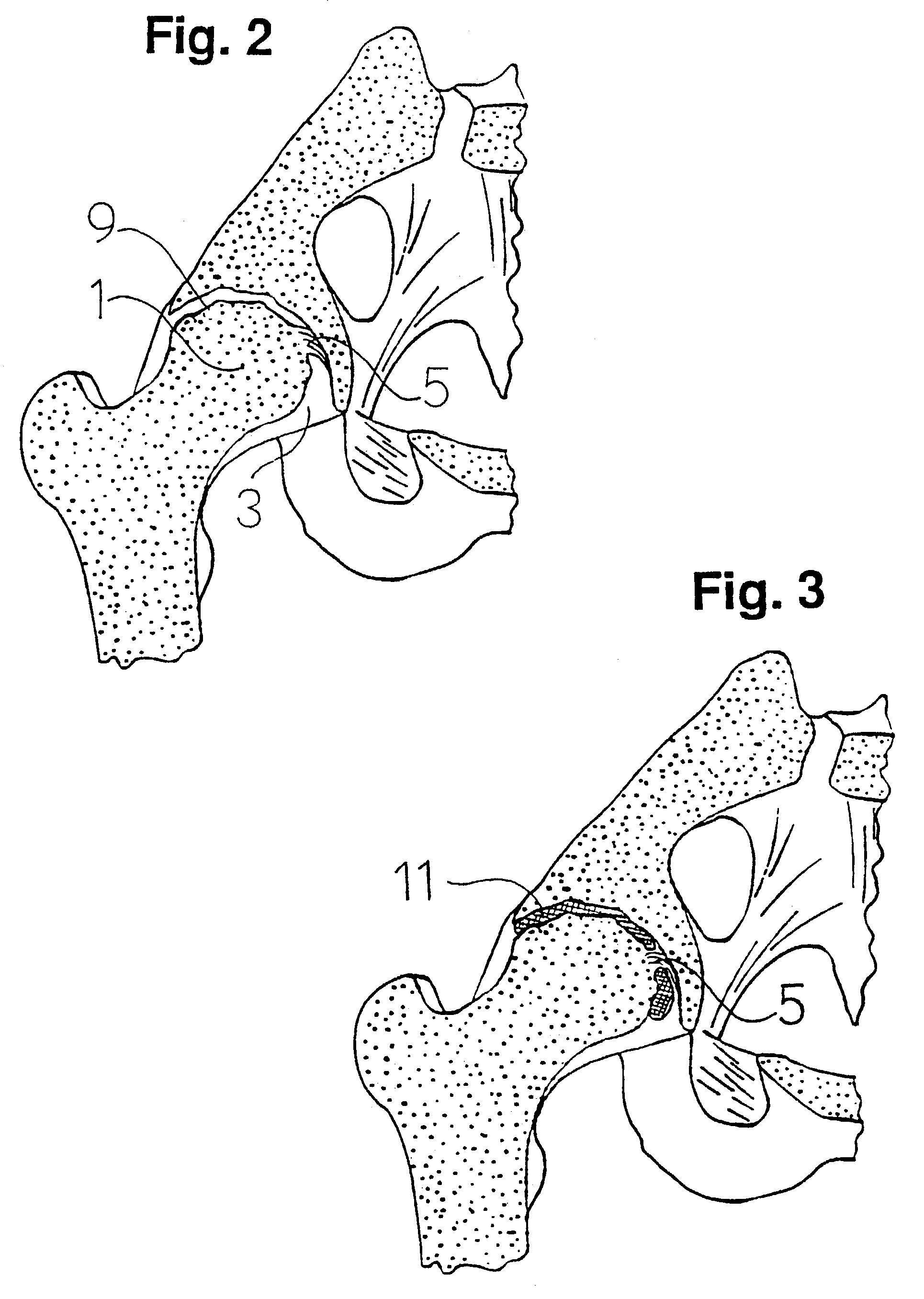Prosthetic device
a technology of prosthesis and cartilage, which is applied in the field of prosthetic devices, can solve the problems of many side effects, loosening, and broken bones around the artificial joint, and achieve the effects of improving movement, reducing pain and other symptoms, and healing the sick bone structure and/or cartilage structur
- Summary
- Abstract
- Description
- Claims
- Application Information
AI Technical Summary
Benefits of technology
Problems solved by technology
Method used
Image
Examples
example 1
[0227]The device is produced using compression molding. A preformed fibre network consisting of polyethylene fibres (Dyneema®, DSM Holland) wetted with a plastomer of the polyethylene type (Hostalen®, DSM Holland) is heated and compressed into the shape of the finished device in an appropriate mold. The heating procedure ensures that the plastomer flows together. The heating temperature is selected below the melting temperature of the fibre crystallites in order not to loose the crystallinity of the polyethylene fibres, ie. below 140° C., and above the melting temperature of the polyethylene plastomer, ie. in the range between 100-140° C. Subsequent cross-linking of both fibres and plastomer is obtained using treatment with accelerated electrons followed by annealing. As the cross-linking process takes place in the amorphous polyethylene regions, the optimal dose will depend on the fraction of amorphous polyethylene in the final device. The optimal radiation dose is close to the gel...
example 2
[0228]The device is produced as described in Example 1, except that polyvinylpyrrolidone is substituted with a solution of 2-vinylpyrrolidone.
example 3
[0229]The device is produced as described in Example 1, except that polyvinylpyrrolidone is substituted with a solution of a combination of polyvinylpyrrolidone and 2-vinylpyrrolidone.
A Surgical Procedure for Insertion of a Prosthetic Device According to the Invention into the Hip Joint
[0230]Antero-lateral exposure of hip. Modified Smith-Petersen approach (Smith-Petersen M. N.; Approach to and exposure of the hip joint for mold arthroplasty. J. Bone Joint Surgery 1949; 31 A: 40)
[0231]Technique: Position of patient: The patient may lie supine on the operation table. Traction may be applied by use of bone traction in the femoral condyles, or by soft tissue traction in a boot as used when osteosynthezising a proximal femoral hip fracture. A counter extension may be applied by an external pin placed on the symphysis. A small sandbag may be placed under the buttock of the affected side to rotate the trochanter slightly forwards. Some may prefer the postero-lateral approach with the patie...
PUM
| Property | Measurement | Unit |
|---|---|---|
| Young's modulus | aaaaa | aaaaa |
| diameter | aaaaa | aaaaa |
| thickness | aaaaa | aaaaa |
Abstract
Description
Claims
Application Information
 Login to View More
Login to View More - R&D
- Intellectual Property
- Life Sciences
- Materials
- Tech Scout
- Unparalleled Data Quality
- Higher Quality Content
- 60% Fewer Hallucinations
Browse by: Latest US Patents, China's latest patents, Technical Efficacy Thesaurus, Application Domain, Technology Topic, Popular Technical Reports.
© 2025 PatSnap. All rights reserved.Legal|Privacy policy|Modern Slavery Act Transparency Statement|Sitemap|About US| Contact US: help@patsnap.com



